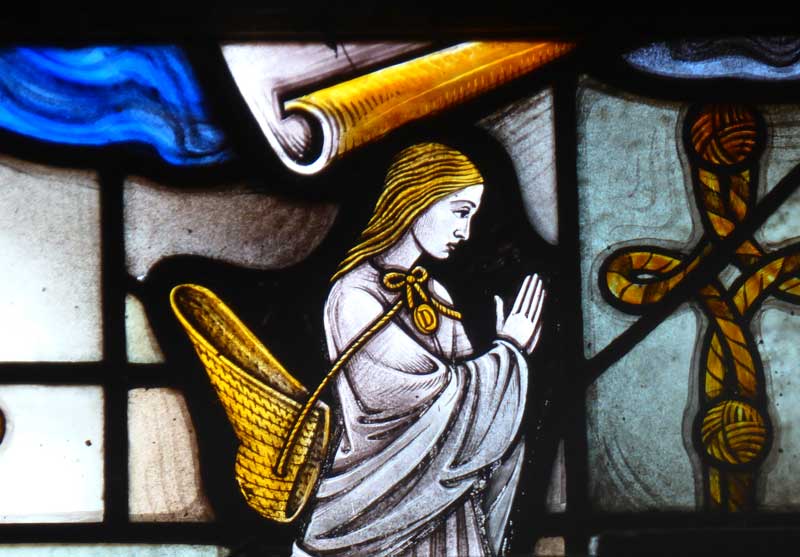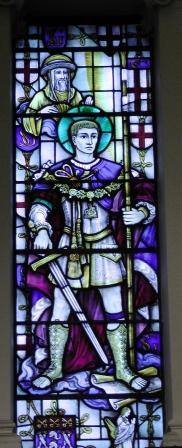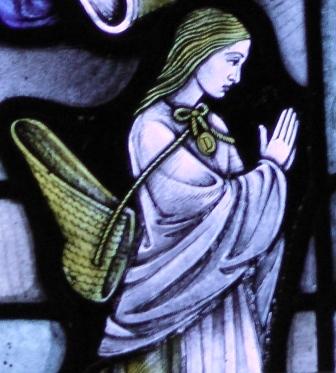
Charles Dickens (1812-1870) first came to know the church of St George the Martyr in 1824 at the time when his father, John Dickens, was incarcerated for debt in the Marshalsea Prison next door.
Dickens, aged just twelve at the time, was haunted by the trauma of this period of his childhood for the rest of his life and veiled, as well as not so veiled, references to it, and to the abandonment he felt with the sudden loss of his childhood, crop up time and again in his novels.
In 1856 he wrote Little Dorrit and confronted the "crowded ghosts of many miserable years" by making his heroine "The Child of the Marshalsea."

Because the church stands adjacent to the site of the Marshalsea Prison, St George's features extensively in both the pages of the book and the life of Little Dorrit
It was inside the church that Amy (to give her the name Dickens conferred on her) was christened "one Sunday afternoon", when the prison turnkey "being relieved...went up to the front of Saint George's Church, and promised and vowed and renounced on her behalf, as he himself related when he came back, "like a good 'un"".
In other words the prison's turnkey acted as her godfather!
Later in the book, Little Dorrit and Maggy return late to the prison one "chill dark night, with a damp wind blowing" only to find themselves locked out.
With the air "so raw and cold" Little Dorrit walks the sleeping Maggy around to keep them warm and she notices the lights on in the church. Ascending the steps she finds the doors open and, peeping inside, she disturbs the sexton, who, recognising her, observes that, "..we've got your birth in our Register, you know; you're on of our curiosities..."
Taking them into the vestry where he has a good fire going, on account of the fact he is "waiting for the painters, or I shouldn't be here...", he observes that "...one of our curiosities mustn't be cold, when we have it in our power to warm her up comfortable..."
Having brought her and Maggy inside and, for good measure, having shown her the record of her Christening in the church register where she'll find herself, he tells her, "as large as life", he brings cushions in from the church and arranges them on the floor in front of the fire for her and Maggy to sleep on.
Deciding she needs a pillow to cushion her head, he takes down the Burial Register from a shelf, observing that "what makes these books interesting to most people is - not who's in 'em, but who isn't - who's coming, you know, and when. That's the interesting question."
"Commendingly looking back at the pillow he had improvised", the sexton leaves them to "heir hour's response."
Soon, according to Dickens, "Maggy was snoring already, and Little Dorrit was soon fast asleep, with her head resting on that sealed book of Fate, untroubled by its mysterious blank leaves..."
Little Dorrit's final connection with church is when she comes here to marry Arthur Clennam; and walking out of the church they pause "...for a moment on the steps of the portico looking at the fresh perspective of the street in the autumn morning sun's bright rays, and then went down. Went down into a modest life of usefulness and happiness...into the roaring streets, inseparable and blessed."

Thus are linked Dickens Child of the Marshalsea and the church of St George the Martyr, so much so that the church is often referred to as "Little Dorrit's Church." Indeed, Little Dorrit herself is still to be seen inside the church.
For, if you approach the altar and look up at the left panel of the magnificent stained glass window behind it, you will see the figure of St George, sword in hand.
But, following the line of his sword to its point, you will observe that his foot is resting on a piece of curled parchment. Directly beneath this parchment there is the, much smaller, kneeling figure of a girl, whose hands are clasped in prayer, and whose poke-bonnet is dangling from her back.
This is Little Dorrit and, although she might not be "as large as life", she is most certainly still, very much, one of the curiosities of the lovely church of St George the Martyr.